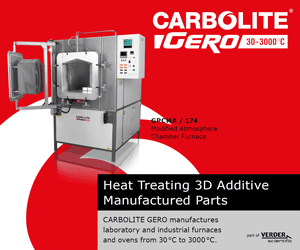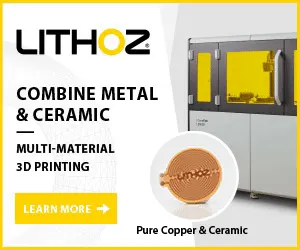Design advantages of metal Additive Manufacturing
The design advantages of metal Additive Manufacturing are intrinsically linked to the AM process being used and the design restrictions that come with it. For example, parts manufactured by PBF-LB have specific requirements around unsupported overhangs, which typically cannot exceed 45°, whereas a Binder Jetting process may have shrinkage design considerations, and a DED process will have line of sight limitations.
The material being used will also be a factor in the design of a part, e.g., if the material is prone to distortion due to residual stress. Manufacturability is key to a good design, as without it, good-quality parts cannot be produced, and resources are wasted.
As with any additively manufactured part, the design begins within the software environment. A good design engineer will be able to work across multiple different design platforms if necessary. Topology optimisation is a technique used to remove excess material from non-load-bearing areas of a part to reduce the overall weight.
Topology optimisation is used for more conventional manufacturing processes, but AM technologies generally enable the greatest weight savings, particularly when transitioning from a part designed for a conventional process. Generative design is another approach, but considers the part design process more holistically, considering the fundamental requirements of the part.
To gain the full benefit of the design advantages of metal 3D printing, several design elements can be used that greatly enhance the effectiveness of the technology. Triply periodic minimal surface (TPMS) structures are formulated to use minimal volume for maximum area coverage. TPMS structures are increasingly found in lightweighting or heat exchange AM designs.
Lattice designs are another design element increasing in adoption and popularity for AM. Researchers have been able to develop tunable lattice structures that vary in orientation, size, strut diameter, and spacing, such that the properties of a part can be designed to change the inherent part properties with a change in lattice arrangement. This is useful in applications such as matching Young’s modulus of bone in a medical implant, or the design of crash zones within automotive parts.
Ultimately, good design can drastically enhance a part’s performance, and hence its potential to be adopted as an additively manufactured part. Additionally, AM design skills can reduce the need for support structures by incorporating features such as diamonds and teardrop shapes, instead of circular holes.
A skilled designer will consider part orientation within a build volume, which can reduce post-processing via upskin and downskin considerations, and can reduce build times with a design enabling efficient packing of parts on a build plate.
Currently, a combination of software and AM designer skill can enable companies to make use of the full design advantages of metal 3D printing, but there is still much room for improvement. The challenge ahead pertains to the low-volume nature of AM, as design improvements and efficiencies tend to come about with mass production.
> Next page: Growth areas and market potential of metal Additive Manufacturing
Download Metal AM magazine















